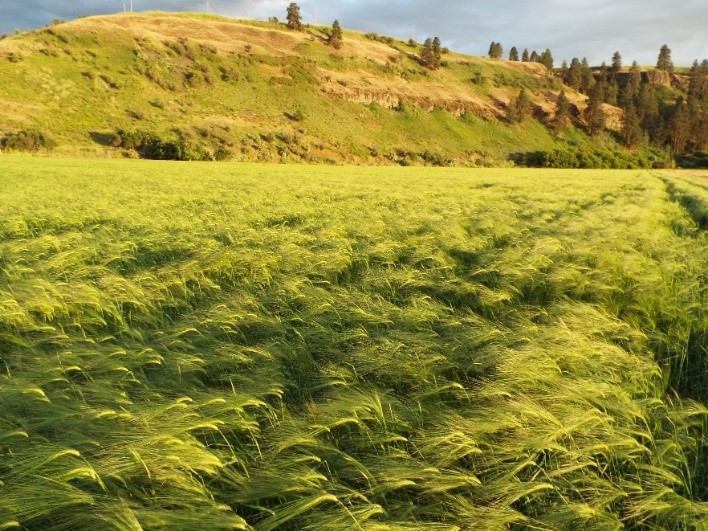Artist Katherine Nelson Creates Drawings Inspired by Grain
Our longtime Palouse Colony Farm friend, Baltimore artist Katherine Nelson, learned of our mutual interests in country life, history, and art through our cousin, photographer and musician Tom Schierman, of nearby Lancaster. In recent years Katherine has visited the farm several times to study locations for her phenomenal artistic creations in charcoal, paint, and fabric. She was here in the Northwest again this summer to participate in an art show held at Art Spirit Gallery in Coeur d’Alene, Idaho, where we both made presentations on agrarian art. A video of those presentations is provided below, along with an article from a larger feature written by Carrie Scozzaro for the July, 2018, issue of The Inlander.
The Palouse has inspired countless artists with its iconic vistas of grain-covered hills, yellow-gold and green against an azure blue sky and dotted with farmsteads. When clouds roll through and the light shifts, the hills appear to undulate as if a vast carpet of living color. Yet for artist Katherine Nelson, the allure of the Palouse goes well beyond the visual.
“Drawing the Palouse is a quest to express the obvious and implied human connections within a unique place formed by nature and agriculture," Nelson writes in the artist's statement for the Art Spirit Gallery's July exhibition of her charcoal drawings alongside Jerri Lisk, Mark Lisk and Al Swanson. "After thousands of field observations, I have developed an admiration for farmers and agrarian fortitude. I see my work aligned with the work I observe, and think that sowing seeds of grain to nurture our bodies is analogous to developing artistic imagery for visual nourishment.”
Nelson's affinity for the Palouse began in 2001, when she relocated to Eastern Washington with her husband and two young sons. Early pieces, which she exhibited at the Art Spirit in 2005, ranged from still lifes to ravens, and from Oregon Coast scenes to rolling fields and broken fences amidst farmlands. By 2007, Nelson was featured in an Art Spirit exhibition entitled The Circle in the Center and Beyond. It conveyed the Palouse through graphic elements of design—light, value, pattern, shape, line—from ribbons of roads to the upswell of morning mist over the land.
“Charcoal is a perfectly suited medium for expressing the undulating Palouse fields and farmsteads," Nelson says in an interview from her home in Washington, D.C. "I love charcoal because it is fluid, forgiving, mysterious and strong. I draw by layering dark velvety values and build textures that are obtained through an additive and subtractive process using a variety of charcoals, pastels, blenders, brushes and erasers.”
What Nelson says she's trying to express is a "luxuriant textural carpet full of patterns, shapes and values" not unlike the antique carpets and weavings she remembers her father collecting while a diplomat in the Foreign Service who travelled throughout the Middle East.
The panels also suggest relationships, such as those Nelson developed while immersing herself in the grain community during Palouse visits from the East Coast, where she relocated in 2012. During one such visit she was introduced Tom Schierman, a St. John-area farmer and photographer who helped Nelson in her quest for Palouse vistas. He also introduced her to his cousin, Don Scheuerman, who co-founded Palouse Heritage — they grow ancient or landrace grains on their Palouse Colony Farm — near Endicott, Washington, with his brother, Richard Scheuerman.
Nelson has visited many private Palouse farms, talked with farmers, attended numerous grain-related events, including the Cascadia Grains Conference and the Grain Gathering, an annual event led by Washington State University to unite producers, consumers and anyone interested in grain. “From my perspective, as an observer and a visual artist," Nelson says, "these interdependent artisanal connections between farmers, millers, bakers, brewers and distillers are in fact, weaving people together quite like a carpet.”
Katherine Nelson, Palouse Colony Farm (charcoal on wove paper, 2017)
Katherine at Art Spirit Gallery, Coeur d’Alene, Idaho
Katherine and Tom Schierman, Palouse Colony Farm (July, 2018)
Palouse Colony Vista (2018)










